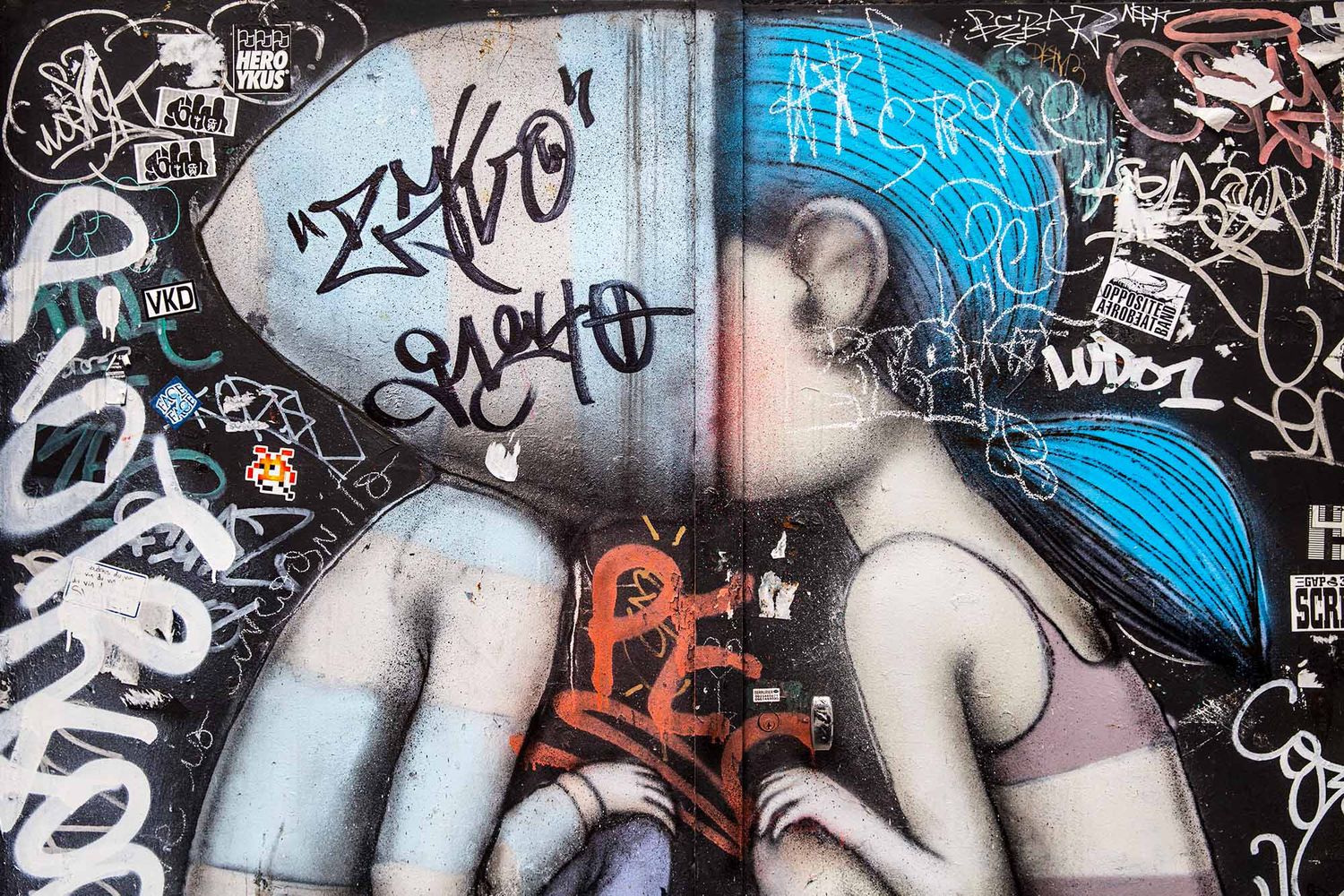
Urban Art: The different practices and techniques of Street Art
Sarah Guilbaud • Posted on June 18, 2023
Street art practices and techniques are very wide: stencils, collages, stickers, mosaics, street installations, tape art, hijacking of street signs... are just some of them. Explanations.
Stencil Art
The practices and techniques of Street art are diverse and varied. But stencil is the first word that comes to mind! In France, stencils first appeared in the early 1980s, although Ernest Pignon-Ernest was already creating them in 1966 on the Albion plateau in France: against the installation of an atomic arsenal, he denounced the effects of the bombs, using the silhouette of a man calcined by the atomic flash in Hiroshima. To this end, he created a stencil which leaves the imprint of a human on the walls of houses and rocks. A new form of expression was born: Stencil Art. In Paris, this technique which was simple at first - a paper or cardboard pattern cut into clean shapes and painted with aerosol spray or with a roller - quickly became popular! In the 80s, the walls of the capital were full of graffiti, but artists like Blek Le Rat set themselves apart by imposing their own style. Epsylon Point, Nemo, Jef Aérosol, Miss.Tic, Artiste Ouvrier, then C215... followed suit and made their mark in reinterpreting famous work of art or making portraits of international personalities. Banksy too! This medium, as old as the world, makes it possible to offer precise works which will gradually become more complex over time, thanks to the use of several stencils and therefore several shades for the same work. Another advantage of this technique is that stencils are easy to transport and can be reproduced several times, quickly. This is one of the reasons why this technique is so widespread today, and still very popular among urban artists, whether they are creating full-fledged artworks using stencils, or adding graphic elements to a work in combining several techniques.

Collage Art
On the other hand, collage, another well-known technique in France, is directly inspired by public display. Ernest Pignon-Ernest was once again a pioneer in the early 1970s, when he created life-size human representations which he then reproduced in silkscreen. He then pasted them on city walls, and later in many cities around the world. His portrait of Rimbaud was a milestone and is now used as a tribute by many street artists. But collage (also called "paste up") is a complex technique: it's not enough to simply print sheets and stick them on walls. The quality of the paper must be particular because it has to adapt perfectly to the support. Another particular attention is also paid to the glue, which is made from wheat starch for a better adhesion on the walls. Among the collages, posters are another simple and effective means of communication. After the wave of May '68 and its famous political posters, artists reappropriated this technique in the 1980s, and have since been noticed though increasingly large-scale creations. A technique that is also less risky for urban artists, since a collage can be easily removed, unlike a stencil or graffiti, making it an art form that is much more tolerated by the authorities. Today's artists include JR, who pastes monumental photographs all over the world, Levalet who composes real scenes with his character, and Madame who stands out with her works that are produced in small formats, then digitized and printed in very large formats before being pasted in the streets.
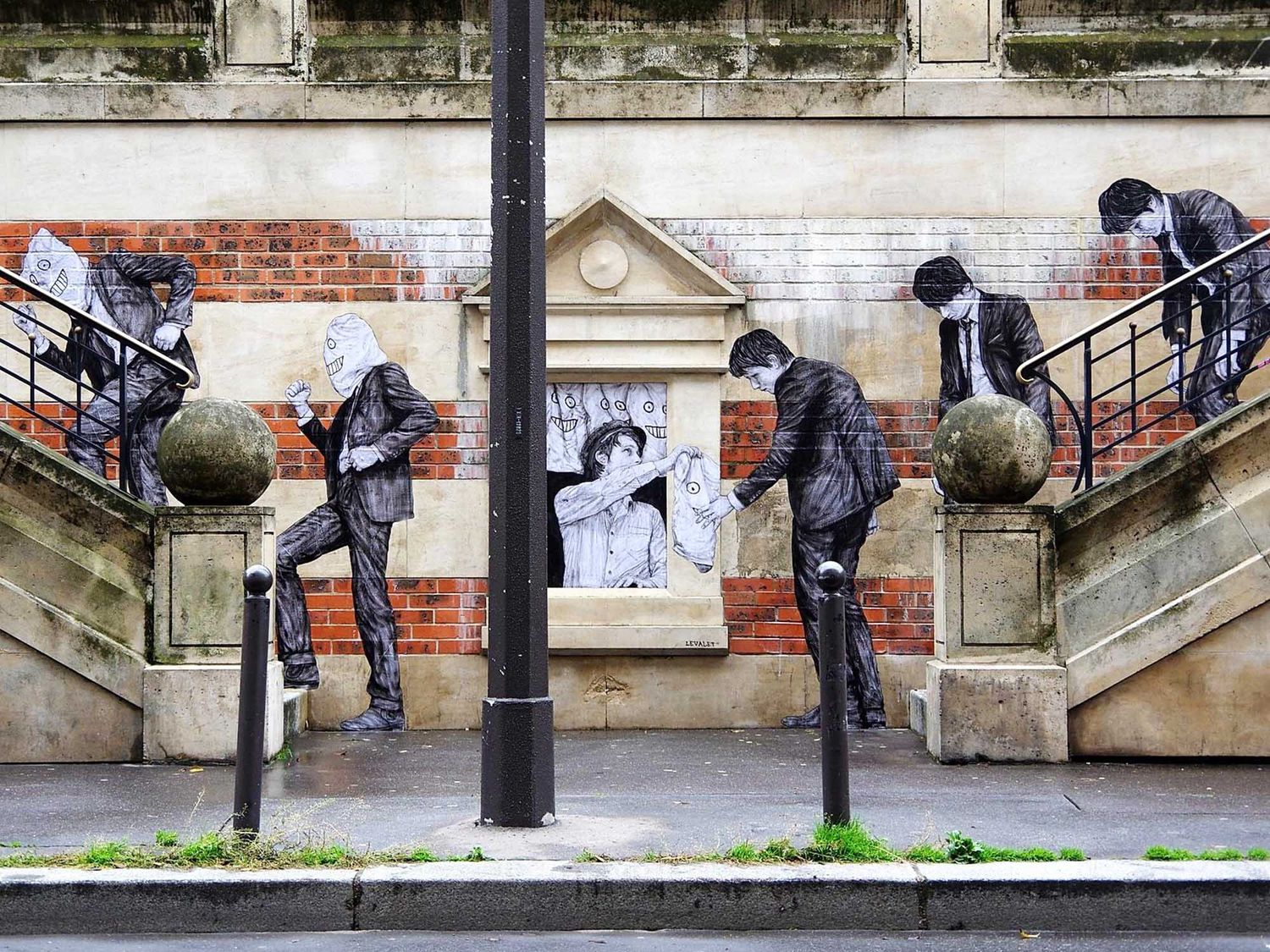
Sticker Art
Another popular form of art in the street is Sticker Art, which is simply the art of placing stickers on the street! As with stencil art, it is easy for artists to move around with stickers before sticking them all over the public space. It is also less degrading than spray cans or paint. Gutters, mailboxes, poles, road signs... are therefore seeing all the colors as more and more artists use this technique, which originally came from the USA. There's nothing simpler than taking out of your bag a stack of stickers designed at home or printed on a vinyl support by companies that produce them, and sticking them where they will be seen the most. More often, this practice complements other techniques to increase an artist's visibility in unexpected places. This is particularly true for taggers and graffiti artists, who have long been hijacking the sticker "Hello My Name Is" to put their signatures and then stick them on the best spots. But the first to really get noticed with this art form was Shepard Fairey (also known as Obey The Giant), who stuck his first Andre the Giant sticker on the streets of the city of Providence (Rhode Island) in 1989, with the message "Andre the Giant Has a Posse". The future will characterize his work as the first work of art in sticker form, developing one of the most fundamental categories of the Urban Art movement.

Mosaic Art
Street art is also, and still is mosaic art, which isn't new either! Back in Greco-Roman times, real frescoes were already created with this technique, which consist of assembling small tiles or pieces of ceramic to produce an overall image or a motif in the form of pixel art. This pixelated aesthetic has inspired and given ideas to artists around the world to create faces, characters, words and color variations using a variety of materials. Among them, of course, is the artist Invader, who has been inspired by the video game "Space Invader" to create mosaics since the late 1990s, which have since become the subject of a worldwide invasion! He even launched the "Flash Invaders" mobile app in 2014, which enables you to flash Invaders you find around the world to earn points and show off your ranking to others street art hunters (nearly 240,000 users). But this pioneer of "pixel art" adapted to the street has also given rise to new vocations: it's no longer rare to find mosaics of all kinds made by other artists in streets all over the world. These include Orléans-based artist MifaMosa, who illustrates the names of street signs with his compositions, but also the artist from Lyon In the Woup with the Mario Worldz project, or the artist Ememem, who uses the deformations of asphalt and other holes in the road surface to create puddles of tiles (also known as "flacking") and embellish urban spaces. It is also impossible not to mention the work of Johan Karlgren, aka Pappas Pärlor, who decorates the streets with funny pixel art creations inspired by the pop culture.
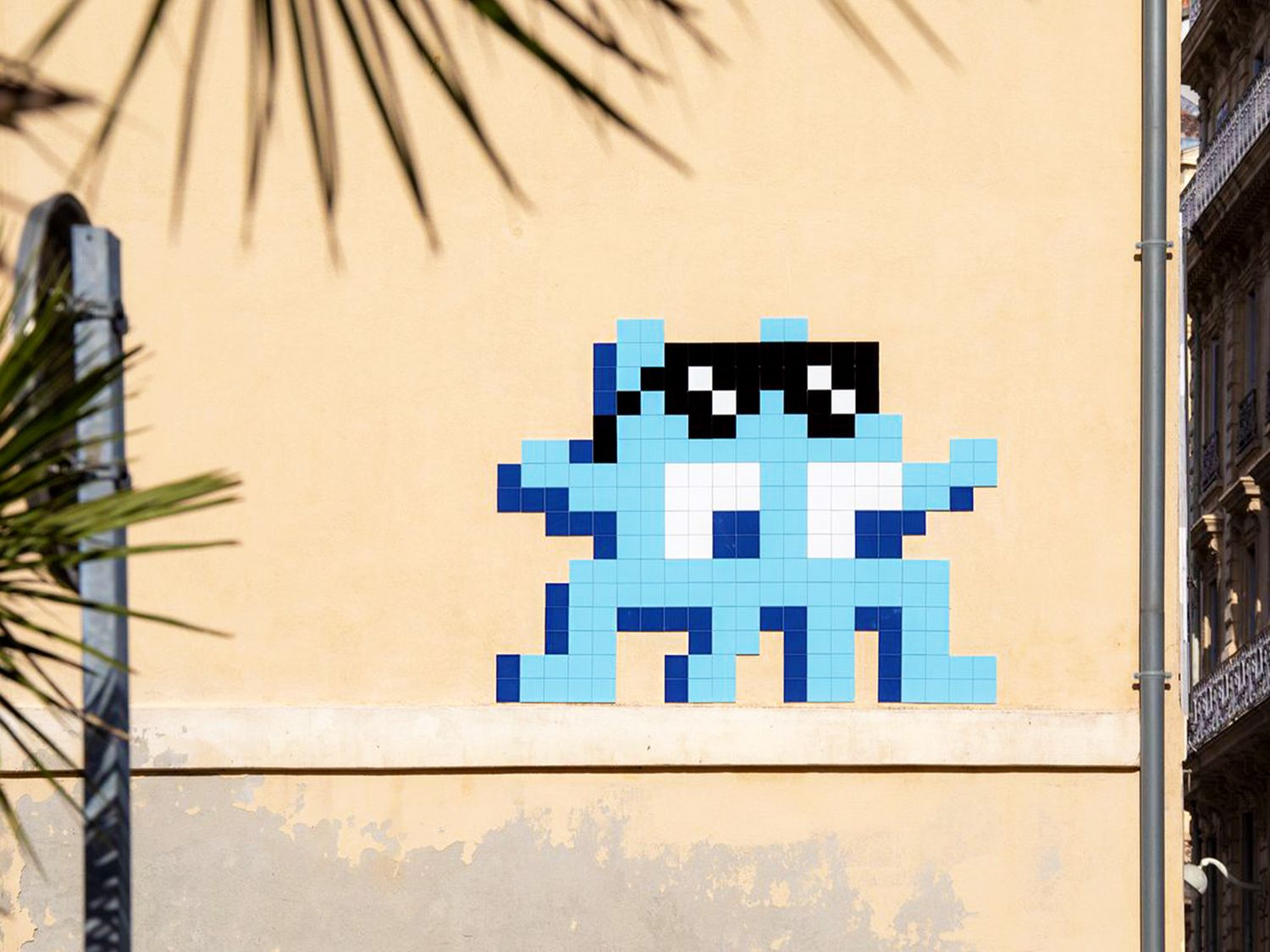
Street Installations
Installations are also increasingly present on the street. Unlike graffiti and other street artworks, which are created directly on walls, installations involve a variety of 3D sculptures or objects that are prepared in advance and then installed in the urban environment. Their purpose is to interact with the public space and provoke a reaction from passers-by. The most impressive are undoubtedly those of the American artist Mark Jenkins, who has developed a technique consisting of molding life-size human forms with transparent adhesive tape and dressing them with real clothes to create an impression of realism that leaves no one indifferent. Spanish street artist Isaac Cordal's human figurines are equally impressive. He creates small concrete figurines that he installs in the streets and then photographs them to recreate scenes of life in miniature. Finally, in France, Gregos made a name for himself in the early 2000s with casts of his face in various moods that he paints in different colors and sticks directly onto city walls. Then, there is the Toulouse-based artist James Colomina who made his mark with sculptures of red characters made from body casts that he wildly places in strategic locations to denounce and question our society in an offbeat and impactful way.
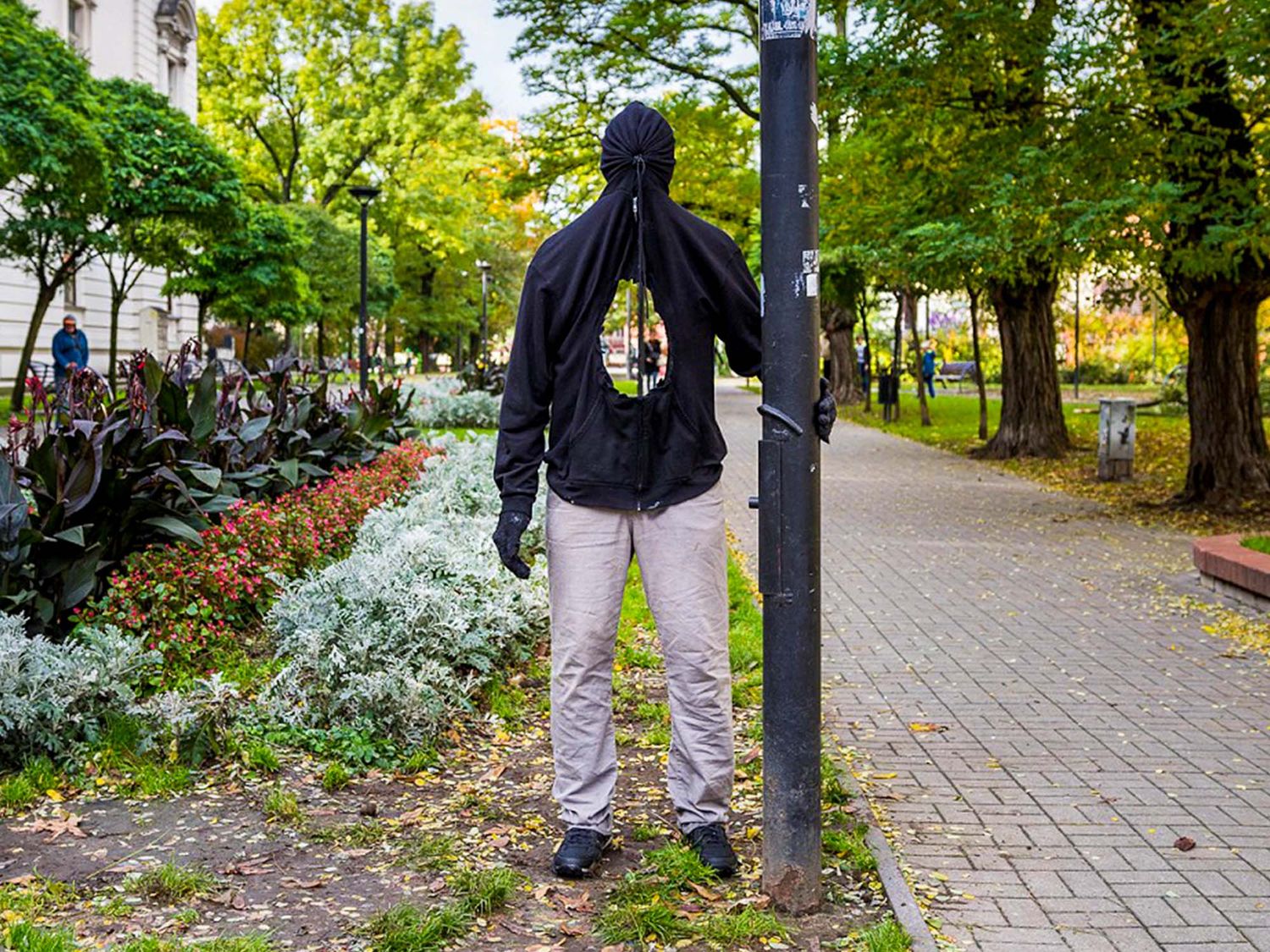
Tape Art
Tape art (or the art of ribbon), a technique that consists of creating works, installations or performances in using various types of adhesive tape, has also spread to the cities. Whether it is opaque with duct tape and called "Duct tape art" or made from brown packing tape and called "Brown tape art", this new form of artistic expression has been developing since the end of the 1980s in the USA as an alternative to the use of spray cans. Its main advantage being that the adhesive tape is easy to handle, quick to install and can either be ephemeral, depending on the tape used, or remain durable for adhesive tapes that are resistant to outdoor temperatures. The first to use the brown tape art technique was Mark Khaisman, a Ukrainian artist now based in Philadelphia, who started superimposing brown tape on a sheet of Plexiglas, playing with the opacity and density of the layers to compose paintings with a sepia tint. But it was Dutch artist Max Zorn who really extend the concept to the street by hanging his portraits on lampposts in cities around the world. As for duct tape art applied to the street, one thinks above all of the Australian artist Buff Diss or the German collective Klebebande, who create astonishing compositions also using spray paint.

The other techniques
The practices listed above are the most representative of Street Art, but there are of course many other techniques, as the world of Urban Art is teeming with diversity. At first, it's impossible not to mention the hijacking of road signs, for which the French artist Clet Abraham is the figurehead. He uses urban signage as a tool for communicating with passers-by, a poetic art intended for everyone. Or video projection, which has been on the rise since the early 2000s, allowing large-scale works to be projected onto facades using the "video-mapping" technique. A form of Street Art among the most spectacular but nevertheless the most ephemeral, with as an example the remarkable work of Philippe Echaroux. In a completely different register, we can also mention the Yarn bombing (also known as urban knitting), which consists of covering trees or street furniture with colored knitting to embellish public spaces (statues, benches, stairs, bicycles, bridges, buses...). The most influential artist in this form of artistic expression is undoubtedly Magda Sayeg, who was the first to come up with the idea of covering her store door in 2005! But that's not all: we could also mention light painting, which combines artistic performance and photography, miniature art, which consists of integrating infinitely small characters into the urban environment...
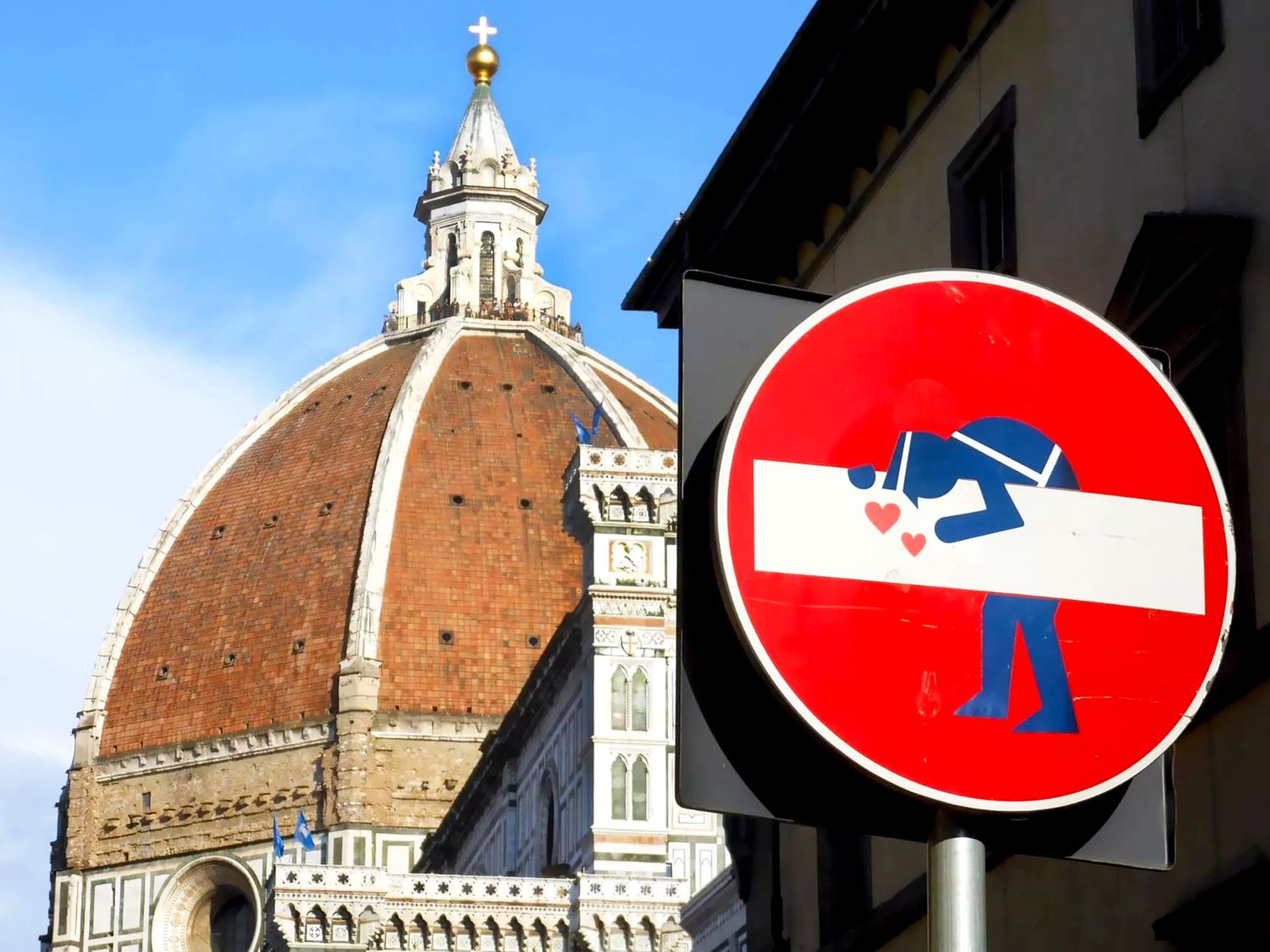
Discover the diversity of Street Art by browsing our catalogue.